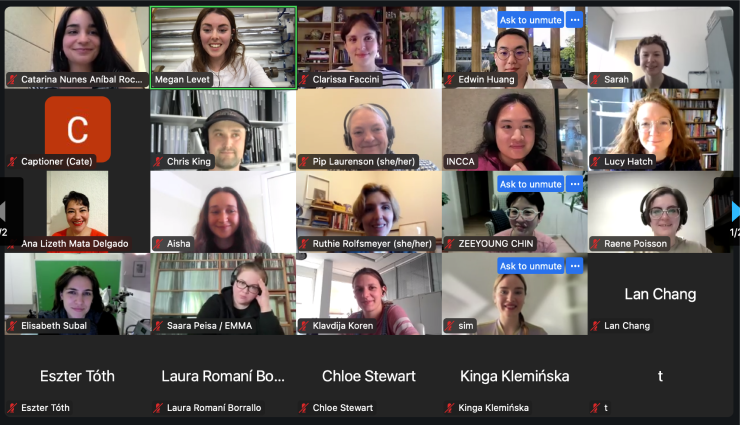
INCCA hosted the fifth Student Café on the 5th of June 2025, which focused on innovation, improvement and advances in the treatment of contemporary artworks and materials. All speakers were offered one-on-one mentoring before the Café with members of the INCCA Steering Committee for support with their presentations, and to help them start to connect with professionals in the field.
Clarissa Faccini de Lima began the Café with a case study on Flor Negra by Cabrita (1999), made from industrial paint on aluminium. The painted surface of the artwork was so badly cracked it could not be exhibited, so, in collaboration with the artist, Clarissa discussed her ongoing tests to remake the artwork using a magnetic system with magnetic additives in the paint in the hope this will prevent cracking in future. This was followed by Catarina Rocha Pires who gave a snapshot into her work in the MOXY project as a promising alternative non-contact cleaning tool for unvarnished, sensitive modern and contemporary paintings. She explained how atomic oxygen produced better results when used to clean soot soiled mock-ups in comparison to techniques such as swab rolling, soft particle blasting and lasers. Further tests are in progress to see short- and long-term effects of the atomic oxygen on the surface. Edwin Huang concluded the talks by discussing different treatment options to restore vintage audio equipment and components. Using a case study of 17th century Chinese silk paintings mended with either contemporaneous silk, new silk, or artificially aged silk, he applied this model to time-based media. While object specific, he found that the most authentic and compatible way to restore a 1920s electric sound system was indeed with vintage equipment rather than a new component aged for purpose.
Questions following the presentations allowed the speakers to discuss with the 54 participants more freely the challenges, limitations, and practicalities of their research, such as the involvement of the artist, their aims for future research and testing on art objects, and the wider impact of their research. Their presentations demonstrated how important it is to continue to share ideas within the conservation community to help expand our knowledge on the treatment of complex contemporary artworks.
The presentation recording is accessible by request.
Find the speakers' bio here.
Photo: Screenshot of INCCA Student Café pt.5: Innovative Treatments.